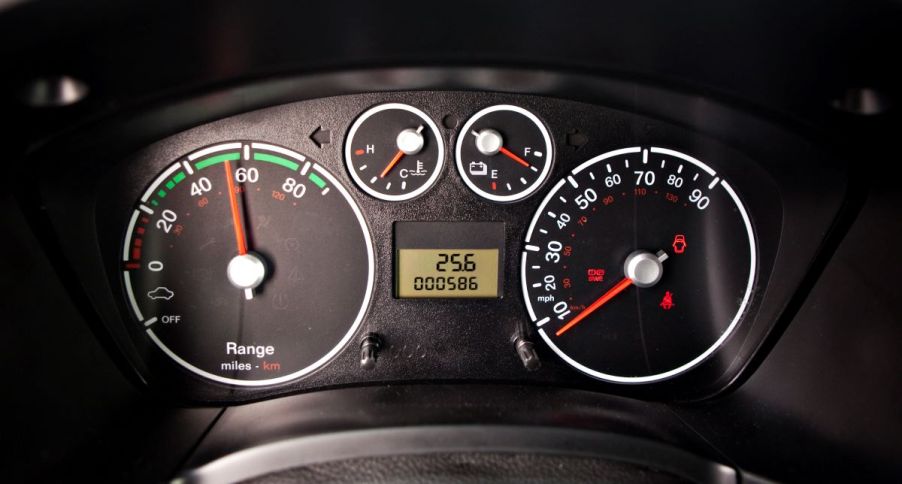
What Do C and H Mean on a Car’s Dashboard Gauge?
Cars have an endless array of letters, abbreviations, and light indicators on the dashboard, infotainment system, and other vehicle parts. Two of the most important ones are “C” and “H,” which are on a dashboard gauge. What do these letters mean? For many readers, the answer is obvious, but others, particularly novice drivers, might not know.
Meaning of C and H on a car dashboard
The C-H indicator, located on a car’s dashboard gauge or instrument panel, displays the engine temperature. While the meaning of these letters is simple, they perform a vital role. The letter “C” means cold, while “H” stands for hot. A vehicle with a properly functioning cooling system should have the needle in the middle of the C-H indicator. This shows that the engine is running well at an ideal temperature.
However, if the needle is at either the “C” (cold) or “H” (hot) points of the temperature gauge, there are likely engine problems. A reading at the “C” point shows that the engine is too cold and needs to be heated up. Conversely, a reading at the “H” point indicates that the engine is overheated. If you’ve ever had an overheated car, you know that it can be a scary situation.
What are the reasons for a C or Cold reading?
A “C” reading on a temperature gauge indicates a cold engine, which is most common during the winter, especially during subzero temperatures. This can even result in not being able to start a vehicle. One way to address this is to repeatedly turn on and off the ignition. Another effective measure is to use an engine block heater.
Also, the needle stuck on the “C” point could result from a malfunctioning thermostat. The thermostat could be stuck open, resulting in the coolant being unable to reach its ideal temperature. The coolant has nowhere to get warm, so the temperature indicator always reads as cold.
If you think that your vehicle might have a malfunctioning thermostat, get it checked out by your local service center.
What are the reasons for an H or Hot reading?
An “H” reading on a dashboard instrument panel is a more serious problem. It means that the engine is too hot. Anytime that an engine overheats, significant damage can result. Along with the hot reading on the temperature gauge, other signs of an overheated engine include a warning light, a ticking noise from the engine, coolant leaking underneath the vehicle, and steam or an unusual smell emanating from under the hood.
RepairPal and Amortips detail many different causes of an overheated engine. This includes:
- Head gasket failure
- Low level of coolant/antifreeze
- Water pump failure
- Problems with the radiator, such as clogging
- Low oil level
- Malfunctioning thermostat, such as getting stuck in the closed position
- Belt issues
- Problems with the radiator hoses
- Clogged heater core
- Electric cooling fan failure
- Drive belt failure
If your car stays at the hot reading, you should avoid driving it. Stop the vehicle and park it in a safe spot. Also, be sure to turn off the air conditioner or heater. Furthermore, don’t immediately open the hood of an overheated car — as you could get badly burned.
After your vehicle has been turned off for a while and cooled down, you can check the coolant level if you feel comfortable doing so. If the coolant level is too low and you have some readily available coolant, add some. After that, try restarting the engine.
If the temperature gauge still produces a hot reading — or you’re not comfortable or able to take any of these measures — then get your car serviced by a mechanic as soon as possible.
The meaning of “C” and “H” on a car’s temperature gauge is simple — cold and hot. However, a reading at the extremes of cold and hot on the temperature gauge should not be taken lightly, for it indicates a potentially serious and dangerous problem.




